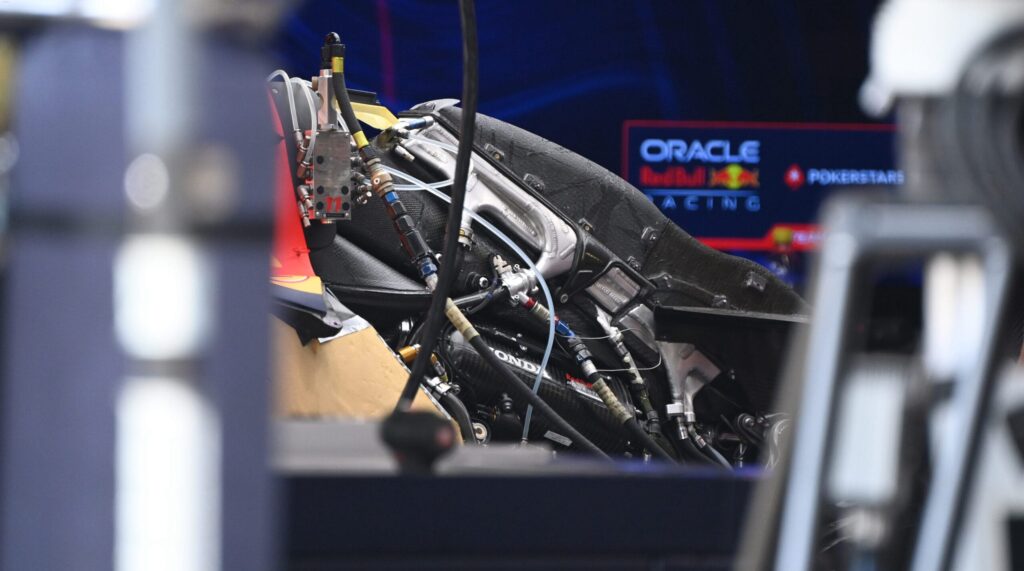
Audience
- Sentiment: Positive
- Political Group: Environmentally Conscious
- Age Group: 18-35
- Gender: Male
Overview
- 2026 will see major changes in Formula 1 regulations, overhauling chassis and power units.
- The new regulations aim to improve racing dynamics and reduce drag for more exciting races.
- The shift reflects broader automotive trends towards sustainability and efficiency, attracting new fans.
The Big Changes Coming to Formula 1 in 2026: A New Era Begins!
If you’re a fan of speed and excitement, then you know that Formula 1 (F1) is one of the most thrilling sports in the world. Teams race at speeds that make your head spin, and the engineering behind these cars is nothing short of extraordinary. But if you think F1 has reached its peak, think again! Big changes are coming in 2026 that could completely transform the sport and how we experience it. These changes are being called the biggest overhaul in Formula 1’s history, and they could redefine what it means to be a racing team in the modern era.
Why the 2026 Regulations Matter
First off, let’s talk about what these new regulations actually entail. In the world of F1, regulations refer to the rules and guidelines that dictate how cars are built and operated. This includes everything from the size and weight of the cars to the types of engines they use.
In the past, there have been some pretty major shifts in regulations. For example, in 1983, F1 moved away from “ground-effect” cars, which used aerodynamics to create air pressure that literally sucked the car to the track, allowing for insane cornering speeds. Fast forward to 2014, and the sport introduced hybrid power units, which combined traditional internal combustion engines with electric motors to increase efficiency and performance.
But the changes coming in 2026 aren’t just minor tweaks; they represent simultaneous overhauls of both the chassis and power units. For many experts, including big names like Christian Horner and Adrian Newey from Red Bull Racing, these changes have the potential to impact nearly every aspect of racing. Why is this such a big deal? Because it signifies a shift not just in technology but in the sport’s core principles, impacting how teams design their cars and how races are conducted.
What’s Changing in the Chassis?
One of the key aspects of the 2026 regulations revolves around the car chassis—the framework that makes up the body of the car. Changes in this area are focused on improving racing dynamics, which refers to how cars handle during the race. The goal is to create closer racing, meaning that we may see more wheel-to-wheel action and overtakes, making races even more exciting for fans.
Another important change is the reduction of drag. Drag is a force that opposes a car’s forward motion, slowing it down, especially when it’s going fast. By optimizing the design of the chassis to have less drag, teams can improve their cars’ speed on straightaways instead of just relying on powerful engines. This could mean more exciting moments during races where drivers can really push their cars to the limits.
The Power Units Revolution
Now, let’s jump into the world of power units! Think of this as the heart of the car. The power unit combines the internal combustion engine—a traditional engine fueled by gasoline or some other type of fuel—with hybrid technology that recovers energy (like using batteries).
One of the main goals of the 2026 regulations is to find a better balance between these two aspects. The idea is to make the hybrid systems even more efficient, while still allowing teams to leverage traditional engine performance. This shift aligns with what’s happening in the automotive industry as a whole. Many car manufacturers are moving towards electric vehicles (EVs) and more environmentally friendly technologies. Formula 1 aims to mirror this trend, so it remains relevant both as a sport and as a showcase for the latest technologies.
What Does All This Mean for Teams?
With these sweeping changes to both the chassis and power unit regulations, teams are facing a monumental challenge. Just think about it: They have to rethink everything they know about car design. Engineering teams will need to invest considerable time, resources, and money into R&D (research and development) to create cars that can compete under these new rules.
It’s not just about redesigning existing cars; it’s about reimagining what an F1 car can be. Engineers will have to work harder than ever to balance weight, speed, aerodynamics, and performance. Those teams that can adapt quickly may have a significant advantage when the new rules take effect.
Looking Back at the Past: Why Now?
Considering the rich history of Formula 1, why is 2026 the right time for such a radical change? The sport has undergone plenty of transformations over its 60-year history, so it’s not like this is the first time teams have had to adapt. But the combination of shifting public interests, technological advancements, and the urgent need for more sustainable practices make now the perfect storm for this overhaul.
Public interest in electric vehicles and climate change has never been higher. Fans want to see their favorite sport lead the way in innovation and sustainability rather than lag behind. With 2026 shaping up to be a pivotal year, F1 is attempting to stay ahead of the curve by prioritizing these aspects in its cars.
The Road Ahead
So what lies ahead for fans and teams as we approach 2026? Expect a whole new level of excitement. We may witness races where strategies shift dynamically as teams adapt to the new regulations on the fly. The races could become even more unpredictable, leading to edge-of-your-seat moments that keep fans at the edge of their seats!
It’s also worth mentioning that this overhaul could attract a new generation of fans who are more attuned to the importance of sustainability and technological advancement. In the end, everything is connected—the technology of Formula 1 cars relates to the cars we drive today and the vehicles of the future.
Let’s Hear from You!
As we gear up for these thrilling transformations in Formula 1, I want to hear from you! How do you feel about the upcoming 2026 regulations? Do you think they will improve the sport, or do you prefer the traditional way of racing? What are you most excited or concerned about? Post your thoughts in the comments below—I can’t wait to read what you have to say!




